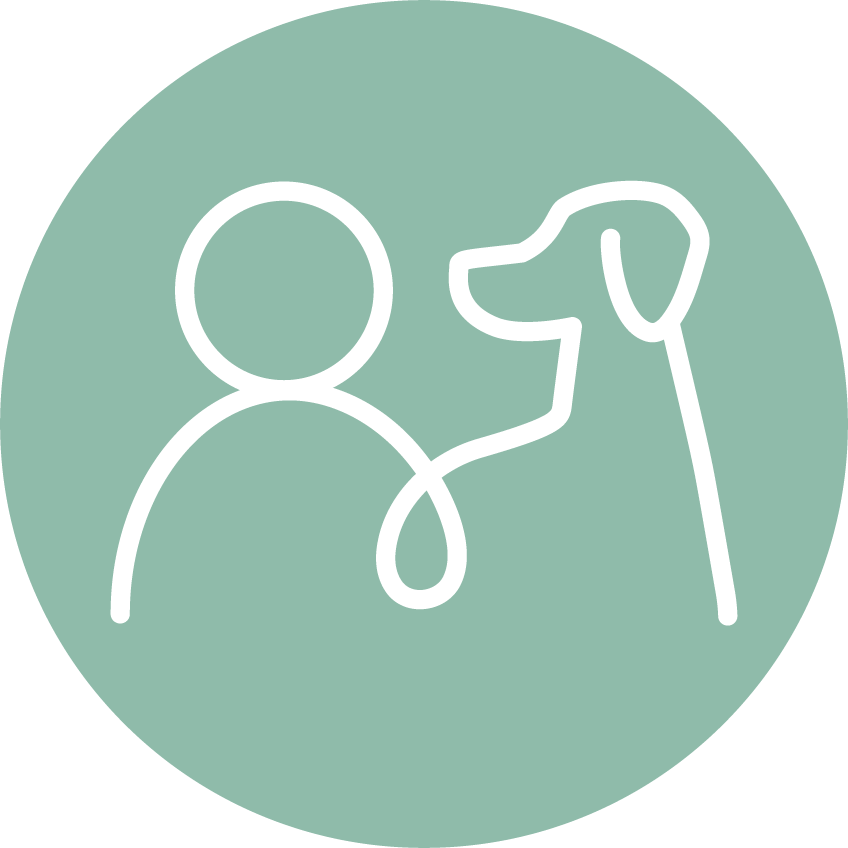Kiki is one the greatest wizards I know (by that, I, of course, mean an applier of behavior science principles), and I had the pleasure of sitting down with her to chat about naturally occurring reinforcers, what they are, when we might use them to teach and when we might transition to them, and how. I learn something every time I talk to her, so I feel confident you will too! Plus, she’s funny.
I made this whole thing available freely (because I am both a pitiful capitalist who loves sharing information and because I didn’t have enough spoons to decide where to put the paywall tonight), but if you’re looking for a way to support TOC and get more access to what we’re doing, subscribing is a really great option.
If you want more on this topic or more from Kiki in general, here’s where you can find her:
Let the World Do the Work: Transitioning to "Natural" Reinforcement Contingencies – Recorded talk from Clicker Expo
It’s All Connected: Modern Loose Leash Walking – Upcoming live 5 week class
Animal Trainers' Retreat: Training With Love + Science – Kiki is speaking at this retreat (live and virtual options) that starts on September 20.
Clicker Expo in NY – In March, she’ll be giving a couple of talks there!
We covered a lot of ground! Here are the big sub-topics we hit:
Reinforcers: What Are They?
What Is a Naturally Occurring Reinforcer?
Can Food Be a Naturally Occurring Reinforcer?
What Is the Opposite of a Naturally Occurring Reinforcer?
How Do You Decide What Reinforcer to Use?
Transitioning from Contrived Reinforcers to Naturally Occurring – Could That Be Aversive?
I Did A Lot of My Baby Prep Without Treats – Sometimes Food Creates Challenges
Teach Your Reinforcement System (Even if You Aren’t Using Food)
A Helpful Decision Tree
Is It Really Cue Transfer?
Hypothetical Example: Dog Who Struggles in the City But Desired Behaviors Show Up on Empty Trails
Would a Scent Cue Help You Transfer Behavior?
Questions to Ask About Should You Transition to or Teach with Naturally Occurring Reinforcers?
Below, I’ve included some highlights from our chat in case you want to skim a little something, but I recommend watching the whole thing if you have the time.
Reinforcers: What Are They?
Kiki explained that they are the outcome of a behavior – something that happens as the result of a behavior or seems to happen as the result of the behavior (usually happens close to it) – and it has the effect of making that behavior more likely to occur in the future under similar circumstances.
Reinforcement is a natural part of life on this planet. Not all reinforcers come from us.
What Is a Naturally Occurring Reinforcer?
Kiki reminded us that words have as many meanings as there are people, but the definition in behavior analysis is “a reinforcer that is going to maintain a behavior when training is over.” (She then joked, “When is training really over?”)
So a naturally occurring reinforcer is the reinforcer that is likely to maintain the behavior in the natural setting (as opposed to training setting) – where you actually need the behavior.
Can Food Be a Naturally Occurring Reinforcer?
Absolutely! Kiki gave the example that food is a naturally occurring reinforcer for behaviors like eating and sitting down at the table. But it’s also a naturally occurring reinforcer if the person you live with is likely to give you food for doing a certain behavior.
She said that natural doesn’t mean “natural” in the call of the wild sense. It doesn’t mean species typical or any of those other meanings of nature.
What Is the Opposite of a Naturally Occurring Reinforcer?
The opposite term is a contrived reinforcer, which is a reinforcer that is intentionally provided to teach someone something.
How Do You Decide What Reinforcer to Use?
Kiki mentioned a blog she has on her website called “When Can I Stop Using Treats?” where she talks about the fact that there are some behaviors that she will use treats forever because there’s no other reason she can give a dog to continue to do those behaviors. For example, sitting still to get poked in the ass by a needle. There are other behaviors where there are plenty of reinforcers that could take over.
Kiki mentioned that this gets into an interesting rabbit hole about conditioned reinforcers – these are reinforcers that have to be learned. She gives some cool examples here with food, brushing dogs, school, etc. – check the full chat.
She talked about how people learn to do things with contrived reinforcers all the time. Good teachers will often try to put the learner in contact with what will be the naturally occurring reinforcer. Kiki gave the example of learning subtraction and then being able to go to the grocery store and get your change.
Sometimes you will teach with a contrived reinforcer and then move to a maintaining reinforcer, but sometimes you won't because the naturally occurring reinforcer may not be easily contacted by dogs. The chat has some examples to ground this idea.
Transitioning from Contrived Reinforcers to Naturally Occurring – Could That Be Aversive?
If your dog is expecting food and then all of the sudden they get access to the outdoors and not food, that could be aversive (even though the dog generally “likes” the outdoors). Kiki gives the example of someone who likes both milk and Pepsi. One day this person orders Pepsi, and is handed a drink in an opaque cup. They take a sip, and it’s milk. What the heck! Even though they like milk, it can be aversive to expect one thing and get another.
You can essentially make a “float” and combine the two types of reinforcers (milk and Pepsi) initially. You may not always have to do this, but it’s something you can do. She gives some practical examples of this in our chat.
I Did A Lot of My Baby Prep Without Treats – Sometimes Food Creates Challenges
Prior to being pregnant, I danced around a lot, and it was always a cue for Otis to grab a stuffed toy and play. I knew I’d likely hold my baby and dance and sing, and I didn’t want this to signal play time for Otis (potentially frustrating for him and unsafe for the baby).
When I did my training, I chose to start in conditions where resting was already occurring and being reinforced (I trusted it was being reinforced because it was showing up repeatedly under those conditions). I then faded new cues in while the existing reinforcers continued to reinforce Otis relaxing.
Why? Food can occasion some unwanted behaviors for Otis when it is signaled and not delivered or when the rate of reinforcement drops too low. I wasn’t sure about my ability to deliver food with a real baby. Also, when food is out, I get a far more attentive dog, and I wanted him to be truly relaxed.
So I started working directly with the naturally occurring reinforcers. We talked a bit more about what was actually happening a number of times in our conversation.
Teach Your Reinforcement System (Even if You Aren’t Using Food)
There are some non-food reinforcers that you may want to use to teach and/or maintain a behavior, but your dog still needs to know how and when to access the reinforcer. (This is also true with food reinforcers.)
We talked about this some with sniffing and petting.
A Helpful Decision Tree
Here’s how Kiki thinks about this:
Do we transition from contrived to naturally occurring?
–OR–
Do we teach with naturally occurring reinforcers, and if so, how do we do that without introducing aversive withholding situations?
Is It Really Cue Transfer?
Can you start where desired behavior (with desired emotionality) is already showing up?
Questions to ask (from Israel Goldiamond):
What skill would make this better?
Does that skill exist somewhere else in the learner’s life? If so, where?
What is maintaining it there?
Once you find the desired behavior, we can capture it (just like we would capture sit). Then we add a cue. Now we can cue transfer to move it to other conditions and get it in contact with other naturally occurring reinforcers.
Kiki gave an example with stranger danger (with a strong caveat that it’s just an example and not something you should run with).
Kiki managed to brilliantly summarize what I had been trying to get at for most of our conversation regarding one way to approach using naturally occurring reinforcers: Find where the desired behavior already exists, reinforce it with naturally occurring reinforcers, and add a new cue that can be moved around.
Hypothetical Example: Dog Who Struggles in the City But Desired Behaviors Show Up on Empty Trails
I gave Kiki an wildly vague example to talk through of a dog who is reactive in the city but walks with a soft body and sniffs when out on empty trails. I asked her how she would apply what we’d been talking about to this situation (that is obviously way too vague to really talk about, but she is a trooper and did it anyway).
Kiki spoke about decompression walks: perhaps time in nature is good for everybody and you’re letting dogs express natural behaviors but perhaps it might also be that learning is occurring that gets transferred to other conditions. What are the cues for their behavior? Their human’s behavior, their equipment, etc. She said there are some things that are transferable and there are things that are fact-of-life in the city – you don’t have the same stuff in the city as the trail.
Kiki went on to explain that if you can observe the conditions where behavior happens and where it doesn’t happen (which means there is other behavior happening), you can look for things that are going to help you identify behaviors that you like that are happening under other conditions, what the behaviors are, and you can replicate or transfer some of those conditions.
She gave a number of examples – one that was particularly powerful was a story of a client she worked with who lived in an apartment with her two dogs. When the client walked out her door onto the landing, her dogs would immediately go nuts and bark at the door on the other side of the landing regardless of whether or not the other dogs behind that door barked or not. From previous training, they were walked on prong collars, and Kiki was in the process of switching them to harnesses. The person was very nervous about going out without the equipment that kept everything safe, so Kiki didn’t have her change that right away. But they practiced skills with the harness in the house, so the dogs learned different behavior under the condition of having the harness on.
On the first day they went out with the harness, she opened the door, and the dogs walked out and past the door and down the stairs (probably looking for food). The cue picture for barking and lunging at the door was gone and was replaced with other behaviors to get food.
Would a Scent Cue Help You Transfer Behavior?
I brought up to Kiki that I am working with some dogs out on trails who do so well out here but really struggling in the city. I have been trying to think of ways to move that behavior, and Kiki said she’s been curious about using a scent cue. I now feel like I need to try this! Scent can be such a powerful cue – especially for dogs who have such strong senses of smell.
Questions to Ask About Should You Transition to or Teach with Naturally Occurring Reinforcers?
Kiki shared the questions she included in her talk on this topic (linked above):
Does the dog have the skills to collect the reinforcer?
Do they have the skills to get the opportunity to collect the reinforcer?
Do they have the skills to enjoy the reinforcer you want them to enjoy?
Example Kiki gives: She doesn’t like card games or board games because she doesn’t play them enough to remember the rules, so she’s always limping along. If you want her to be able to contact the naturally occurring reinforcers for sitting in on a poker game, you’re going to need to teach her the skills she needs to enjoy one (which may mean the skills needed to win one every once in a while).
What is the least aversive, stressful, or coercive way to teach the skills?
For example, would it be easy enough to teach a dog that sitting on the floor leads to petting? Would the dog experience a lot of frustration and extinction? Would it be easier to teach them with treats and then teach them they get petting?
What are the antecedents? We can’t just think about what’s going to reinforce behavior, but also need to think about what cues the behaviors in old and new environments.
How are you going to avoid or navigate that milk-Pepsi moment?
It may not always be a big deal, but she gave an example of where it could be and you’d want to avoid even a single aversive moment as much as possible.
I have learned so much from Kiki over the years, so it was a treat to get to chat with her Live on Substack. What are your thoughts after reading/watching this? What stuck out? What do you have questions about? I would LOVE to hear from you in the comments below.












